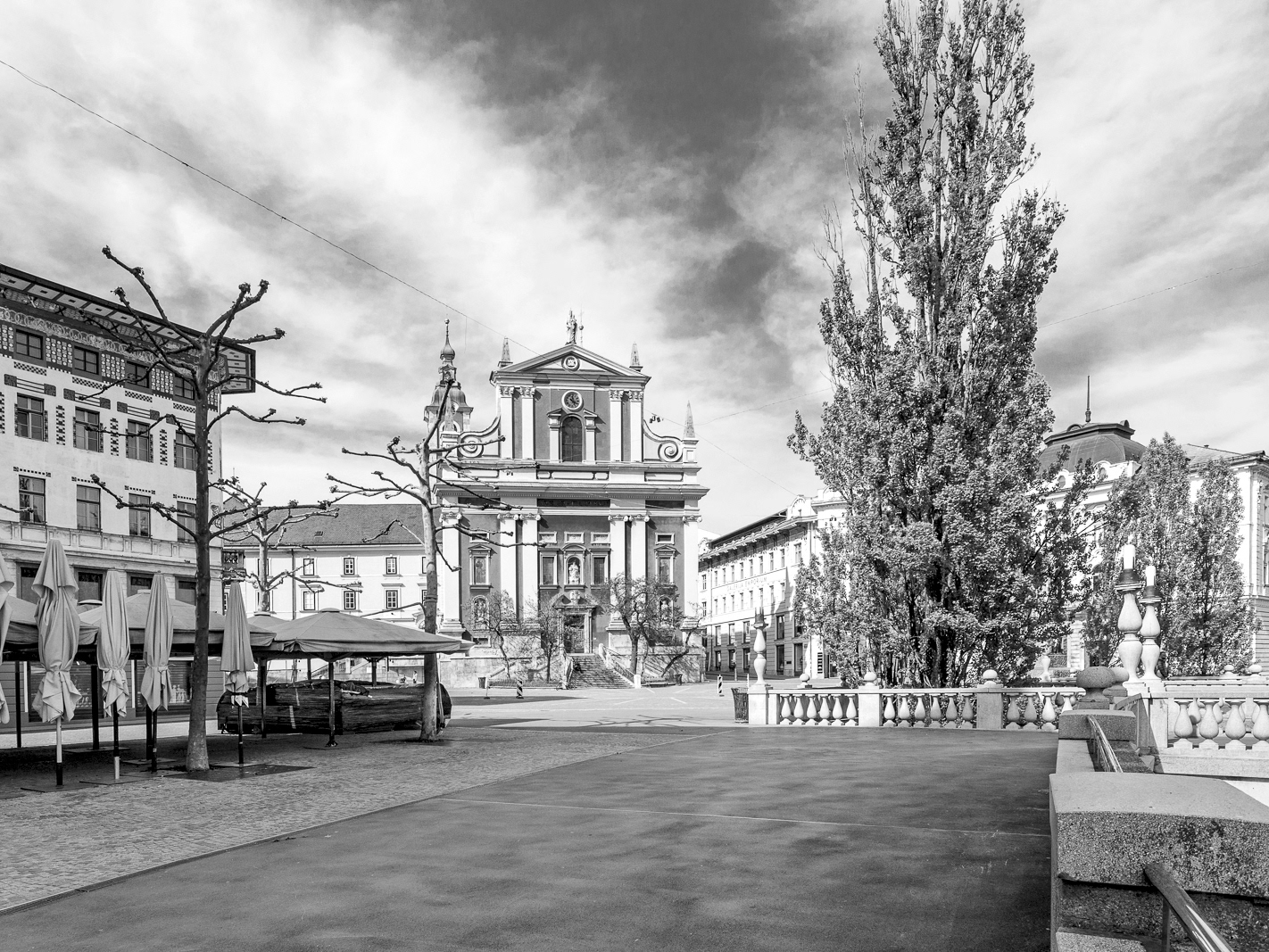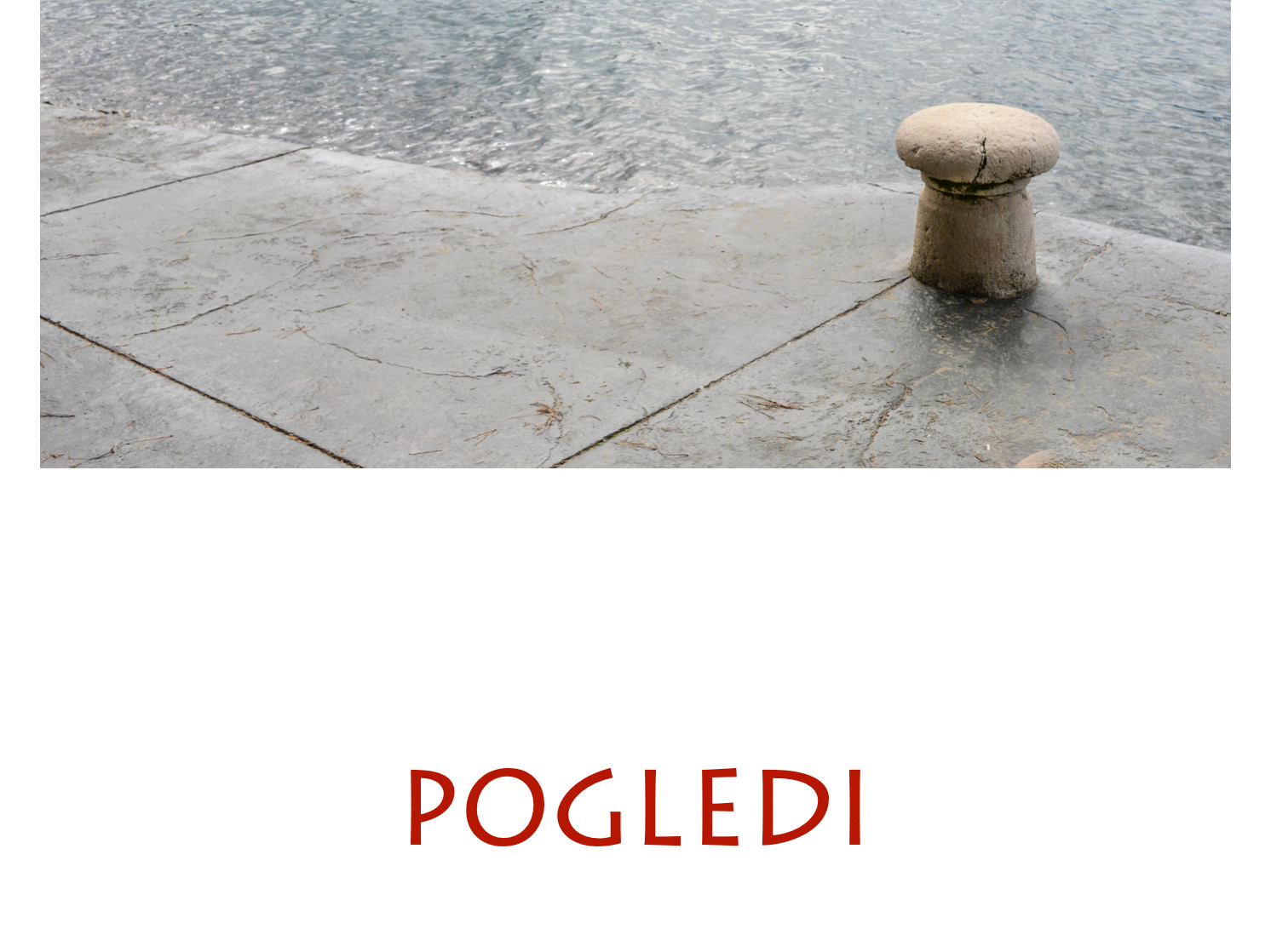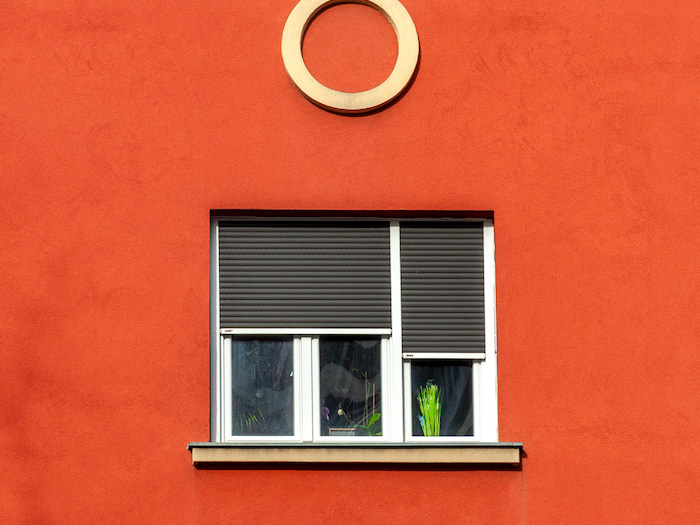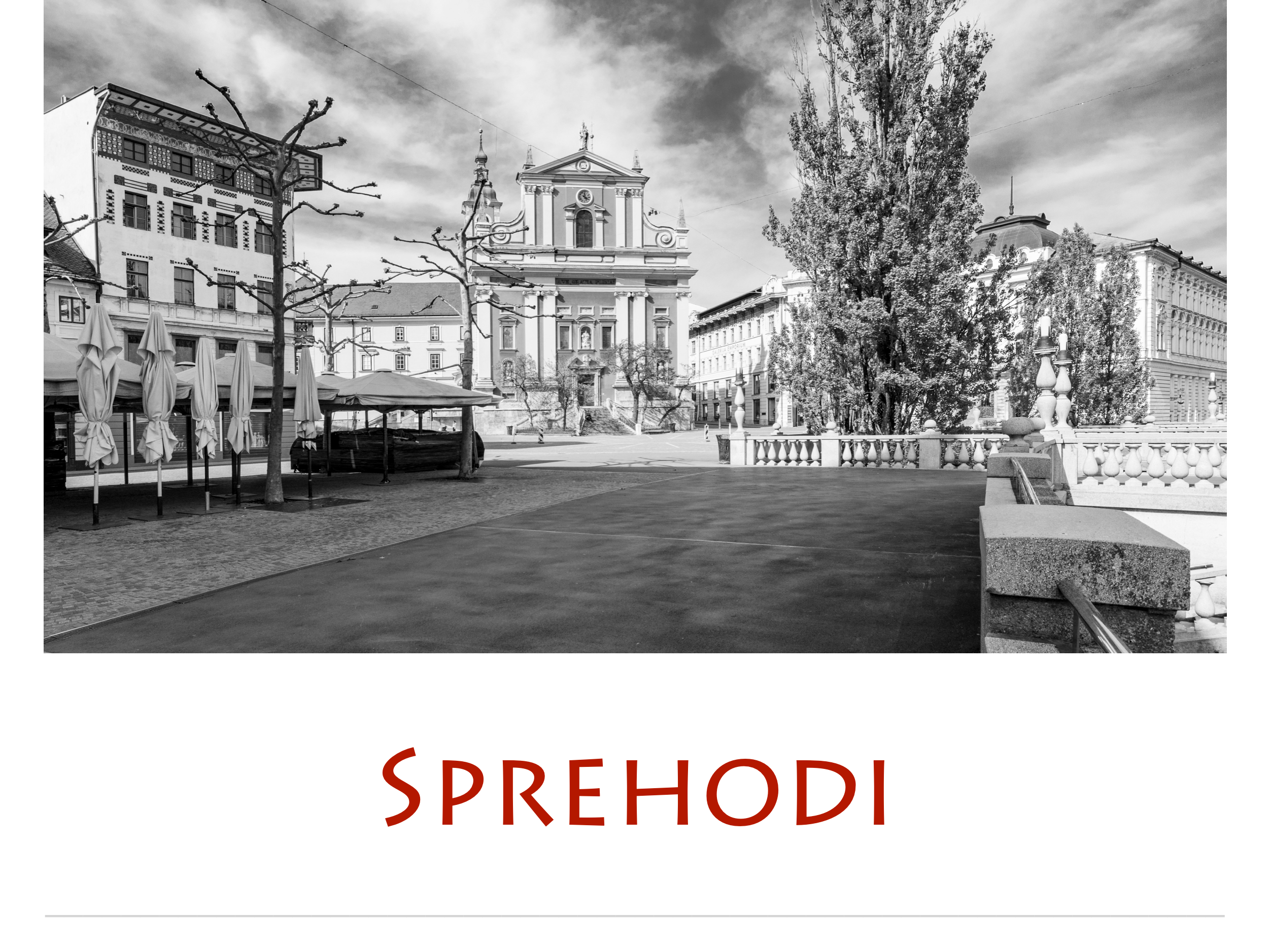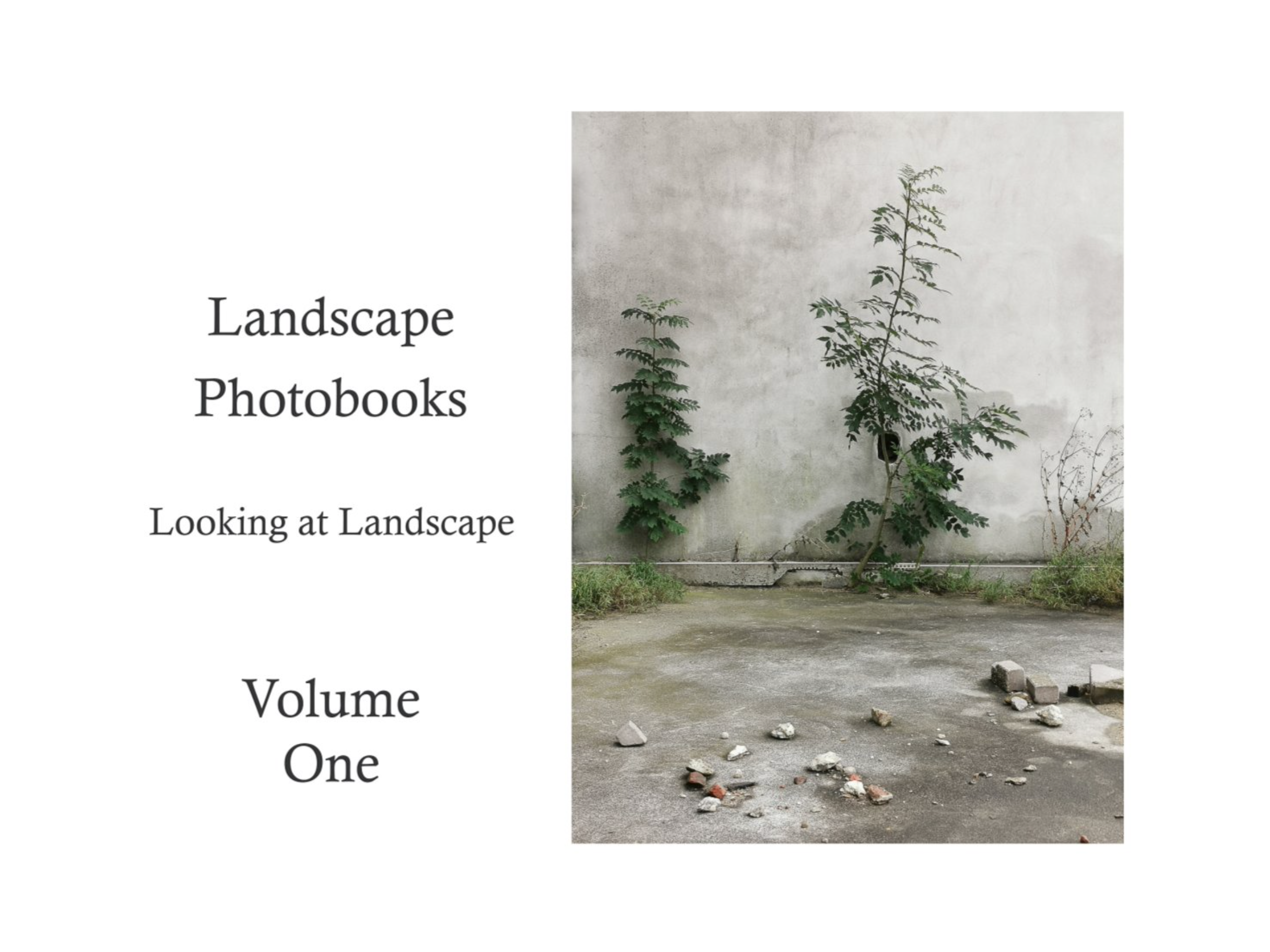Opening speech to the exhibition: "ljubljana - poetry of an empty city"
JANEZ ZALAZNIK
Mesto med tesnobo in poetičnim poklonom
A Place between Anguish and Poetic Tribute
Interpretacija
Kmalu bosta minili dve stoletji od pionirskih poskusov na področju fotografije. Prvi povsem jasni in trajni fotografski zapis je ustvaril francoski slikar in fotograf Louis Daguerre. Leta 1838 je z okna v zgornjem nadstropju stavbe v središču Pariza posnel pogled na široko mestno cesto. Boulevard du Temple sicer velja za prvo fotografijo, na kateri je človeška figura, a sodobniki so se ob pogledu na posnetek spraševali predvsem, kam je izginil vrvež pešcev in kočij, ki je bil zna- čilen za omenjeno ulico. Na prvi pogled se namreč zdi, da gledamo na prazno cesto, na izsek iz velemesta, iz katerega je izginilo življenje; osamljeni figuri čistilca čevljev in nje- gove stranke na robu pločnika se zdita premalo, da prizora ne bi dojeli kot podobe praznega mesta. Lahko razumemo, da se preučevalcem zgodovine fotografije zdi pomembno poudariti prisotnost ljudi na prvi fotografiji, a nič manj upravičeno bi lahko rekli tudi, da Boulevard du Temple pri- kazuje pogled na prazno mestno ulico. Slednje sicer ni bil avtorjev namen, ampak neizbežen rezultat samega postopka zajema slike. Tehnične omejitve leč in kemični postopek svetlobnega zapisa na posrebreno bakreno ploščo so namreč botrovale osvetlitvi daljši od pet minut; to pa je bil predolg čas, da bi se na podobo ujeli premikajoči ljudje in drdrajoče kočije. Nenazadnje je Daguerre posnel tri fotografije ome- njenega bulvarja ob različnih urah dneva, kar nakazuje, da ga pri posnetku niso zanimali ljudje, ampak predvsem vpliv svetlobe na oblikovanje fotografskega zapisa.
Posnetki mestnih ulic, trgov, stavb in spomenikov, par- kov in nabrežij so postali stalnica v kratki zgodovini foto- grafije. Fotografe so mesta zanimala predvsem z dveh skraj- nih polov: na eni strani t.i. ulična fotografija, pri kateri so se osredotočali na ljudi, tako ali drugače vpete v mestno življenje, in na drugi strani podobe, ki so poudarjale arhi- tekturo ter urbanistične specifike posameznih mest. Zani- manje za arhitekturo kot likovno izhodišče v fotografiji je bilo predvsem v 20. stoletju močno prisotno med ruskimi konstruktivisti ter med fotografi v ZDA in Nemčiji. V ZDA je bil trend vzporeden ameriškemu slikarskemu realizmu zgodnjega 20. stoletja, v medvojni Nemčiji pa umetnosti Nove stvarnosti na enem in modernističnim tendencam, ki so se oblikovale znotraj šole Bauhaus, na drugem polu. V drugi polovici stoletja je imela na razvoj z arhitekturo povezane fotografije velik vpliv t.i. düsseldorfska fotograf- ska šola z Berndom in Hillo Becher, ki se z deli njunih učen- cev (Andreas Gursky, Candida Höfer, Thomas Ruff, Thomas Struth idr.) nadaljuje v sodobnost. Še danes, v času, ko je fotografsko beleženje postalo slehernikova nuja, si turisti, popotniki, ljubiteljski ali profesionalni fotografi občasno zaželijo, da bi določen kader mestne vedute lahko posneli brez ljudi, da bi na podobo izrisali le mesto v svoji čisti pojavnosti. Kar je pogosto težko, pa četudi uporabijo, tako kot Daguerre, možnosti dolge osvetlitve ali kakšne druge metode, ki jih omogoča sodobna fotografska tehnologija.
Bernhard Hinz, založnik in knjigotržec, človek številnih zanimanj in fotografski samouk, se je leta 2010 iz rodnega Berlina preselil v Ljubljano. V novem okolju se je intenzivno posvetil fotografiranju – Ljubljano je želel spoznati tudi skozi fotografsko oko. V različnih serijah fotografij, ki jih je ustvaril v zadnjem desetletju, je mesto opazoval preko detaj- lov in izsekov. Neobremenjen z zgodovino mesta ali pomeni posameznih stavb, lokacij in sosesk, je v mestu našel številne možnosti za ustvarjanje bolj ali manj abstraktnih barvnih ali črno-belih kompozicij. V teh delih je pokazal svoj občutek za likovno skladnost v okvirih slikovnega minimalizma (tu se je približal estetiki Bauhausa, kar je potrdil tudi s serijo fotografij, ki jih je posnel ob obisku muzeja Bauhaus v Des- sauu). V seriji z naslovom B strani arhitekture je pokukal v spregledana ljubljanska dvorišča in umaknjene plati arhi- tekture, v serijah z bolj jasno prepoznavno motiviko (Žale, Spomenik žrtvam vseh vojn, Mošeja, Trg republike ...) pa so ga, podobno kot v prej omenjenih minimalističnih seri- jah, zanimala predvsem povsem likovna vprašanja oblik, vzorcev, tekstur, barv ali tonskih razmerij med svetlobo in senco. V večini teh fotografij se je Hinz omejil na ozke izreze in objekti tako niso postavljeni v širši urbani kontekst. Z izjemo serije fotografij, ki jih je posnel na jazzovskih koncer- tih, Hinz v svoje kompozicije ne vključuje ljudi.
Marca leta 2020 je večino sveta zajela pandemija, ki jo je povzročil virus covid-19. Številne države so se odločile za ostre ukrepe omejevanja gibanja in zapiranja mest. Slo- venija pri tem ni bila izjema – ukrepi so zapovedovali tudi omejitev druženja, policijsko uro in priporočila prebival- cem, naj, razen če gre za res nujna opravila, ne zapuščajo.
Več kot mesec dni so bile mestne ulice, trgi in parki praktično prazni. Le občasno se je v praznino mestnih vedut zarisala podoba dostavljalca hrane, pismonoše ali osamljenega sprehajalca. Mesta, ki so jih izpraznile tragične in mučne okoliščine, so se razgalila do svojih arhitekturnih skeletov. Prostori, namenjeni druženju, prehajanju, delu ali zgolj pohajkovanju, so se prebivalcem pokazali kot izpraz- njene urbanistične konstrukcije. Številni fotografi so izko- ristili to možnost dokumentiranja praznih mest. Ko danes pregledujemo fotografije različnih avtorjev, ki so sočasno fotografirali iste prostore v Ljubljani, lahko opazimo, kako različni so bili vzgibi, ki so jih vodili, kako so vsak po svoje interpretirali situacijo in kako smo tako iz praktično enakih motivnih izhodišč dobili zelo širok spekter podob. Nekateri so poudarili nelagodje, tesnobo in strah, ki ga je bilo čutiti izza zidov, drugi so izrazili metafizično nadrealnost praz- nega mesta, spet tretji so prazne ulice povezali z elementi pandemije ali pa so z dokumentiranjem kratkotrajnih grafi- tov, ki so se pojavljali na zidovih in čez noč z njih tudi izgi- nili, spregovorili o tesnobi in uporu prebivalcev.
Bernhard Hinz je v prazni Ljubljani našel poetičnost, ki se mu je prej skrivala pod plaščem vseprisotnih ljudi. Sistematično je dober mesec, kolikor je trajala karantena, fotografiral kraje, ki jih je sicer poznal, a jih je šele v tem obdobju lahko zabeležil kot čiste arhitekturne entitete, kot preplet abstraktnih oblik, tekstur, vzorcev. Odrekel se je bar- vam in izrazitim tonskim kontrastom, da bi poudaril poezijo kraja, ki ga je vzel za svojega, in mestu izrazil svojo naklonje- nost in občudovanje. Izkušnjo »objektivne« fotografije, ki jo je prinesel iz nemške fotografske šole, je za mesec dni opu- stil in se predal svetu subjektivnega poetičnega izraza. Ozke izreze, tako značilne za prejšnje serije, je zamenjal širok kot pogleda. Bolj kot tesnobnost časa, v katerem so fotografije nastale, mehkoba sivin izraža avtorjev naklonjen odnos do mesta. Fotografije so natisnjene na aluminijaste plošče, ki še poudarijo osrednji spekter sivinskih tonov, obenem pa ustvarijo hladnejši nadih. Na veliki večini fotografij ni niti ene osebe, zato podobe neizbežno izražajo tudi trpko melan- holijo, ki še posebej ob velikih praznih površinah mesta občasno zareže, kot nepričakovan verz v pesmi.
Serijo fotografij, ki je nastala v času karantene, je Hinz naslovil Ljubljana, poezija praznega mesta in jo poleti 2023 razstavil v prostorih Art hotela v Ljubljani. Gre za razstavni prostor v središču Ljubljane, kjer lahko člani Društva likov- nih umetnikov Ljubljana v preddverju razstavljajo svoja likovna dela. n
JANEZ ZALAZNIK
THE CITY BETWEEN ANGUISH AND POETIC HOMAGE
About the exhibition “Ljubljana – Poetry of an Empty City” by Bernhard Hinz
Interpretation
Almost two centuries have passed since the pioneering achievements in the field of photography. The first completely clear and permanent photographic record was made by the French painter and photographer Louis Daguerre. In 1838 he took a view of a wide avenue from the top floor window of a residential building in the center of Paris. Although the Boulevard du Temple is considered to be the first photograph depicting a human figure, his contemporaries looked at the photograph and asked themselves where all the hustle and bustle of pedestrians and horse-drawn carriages that is otherwise characteristic of this boulevard had disappeared to. At first glance it seems as if you are looking at an empty street, at a section of the city from which all life has disappeared. The lonely figures of the shoeshine boy and his customer are not enough to avoid perceiving the scene as a depiction of an empty street. It seems understandable that photo historians found it convenient to highlight the presence of people in the very first photo; However, it seems no less justified that the Boulevard du Temple offers the sight of an empty street in a metropolis. The latter was certainly not the author's intention, but an inevitable result of the recording technology. The limited technical performance of the lenses and the chemical processes involved in recording the image on the silver-plated copper plate required an exposure time of more than five minutes, but that was far too long to capture moving passers-by and rattling carriages. Daguerre also took three photographs of the boulevard at different times of the day, which indicates that he was not interested in the people, but rather in the influence of light on the composition of the photograph.
Photographs of streets, squares, buildings and monuments, parks and banks became a constant in the relatively short history of photography. The photographers' interest in cities is primarily reflected in two extremes: on the one hand, so-called street photography, in which the concentration is on the people depicted who are involved in city life, and on the other hand, on photographs that focus on the city architecture and the urban specifics of the city individual cities. The interest in architecture as an artistic starting point for photography was strong among Russian constructivists and American and German photographers in the 20th century. In the United States this trend ran parallel to American realist painting of the early 20th century, and in Germany together with the art of the New Objectivity on the one hand and the modernist trends of the Bauhaus on the other. The Düsseldorf photography school with Bernd and Hilla Becher, which extends from the second half of the century to the present with the works of their students Andreas Gursky, Candida Höfer, Thomas Ruff, Thomas Struth and others, had a great influence on the development of photography. Even today, in times when photographic capture has become everyone's priority, tourists, hikers, amateur and professional photographers sometimes wish to be able to capture a specific section of the cityscape without people and to record the veduta of the city in its pure appearance. This usually proves to be difficult, even if, like Daguerre, you choose long exposure times or use other methods offered by modern photographic technology.
Bernhard Hinz, who works in bookselling and libraries, has a wide range of interests and is self-taught in photography, moved from his hometown of Berlin to Ljubljana in 2010. In his new surroundings, he devoted himself intensively to photography again - he also wanted to get to know Ljubljana through the lens. In various photo series that he made over the last decade, he observed the city in details and excerpts. Unencumbered with the city's history or the significance of individual buildings, locations and residential areas, he found a variety of opportunities to create more or less abstract color or black and white compositions. With these works he demonstrated his feeling for artistic subtleties within the definitions of minimalist photography, approaching the aesthetics of the Bauhaus, as his cycle from the Bauhaus Dessau proves.
The series "B-Sides of Architecture" takes his gaze into overlooked backyards and less visible and attractive architectural works; he is interested in the cycles with clearly recognizable motifs (Žale Cemetery, Monument to the Victims of All Wars, Mosque, Republic Square and others). , similar to the minimalist series, primarily pictorial questions about form, pattern, texture, color or the weighting of light and shadow. In the majority of these photographs, Bernhard Hinz uses narrow sections, which removes the objects depicted from a broader urban context. Except when recording jazz concerts, Hinz does not include people in his compositions.
Most of the world was hit by the pandemic caused by the Covid19 virus in March 2020. In many countries, strict containment measures have been introduced in the form of restrictions on freedom of movement and the confinement of cities. Slovenia was no exception - the measures included restricting contacts, police hours and the recommendation to only leave one's own four walls in exceptional cases. The streets, squares and parks remained virtually deserted for over a month. Here and there in the emptiness of the city vedute a lonely food delivery person, postman or rare walker could be seen. The cities, emptied by tragic and torturous circumstances, were stripped bare to their architectural skeletons. Spaces that were intended for socializing, walking, working or just strolling appeared to the few residents who were out and about as empty urban constructions. Many photographers used this opportunity to document the emptiness of the cityscape. When looking through the photo collections of different authors who photographed the same locations in Ljubljana at the same time, one discovers today what different drives guided them and what different interpretations of the conditions they provided. One is amazed that the virtually identical motive origins have produced this diversity of perspectives. For some you can see the emphasis on the trepidation, unease and fear that was felt behind the walls, others turned to the metaphysical surreality of the empty city, still others linked the empty streets to the elements of the pandemic or documented the short-lived ones Graffiti that sprouted on the walls and disappeared overnight, expressing the trepidation and resistance of the population.
But Bernhard Hinz discovered a poetry in the emptied Ljubljana that had previously remained hidden under the cloak of the crowds present. For a month he systematically photographed the places that were familiar to him, but could only be noted under these circumstances as pure "architecture" - as a network of abstract shapes, textures, patterns. Hinz renounced color and strong tonal contrasts in order to emphasize the poetry of the place that he recognized as his own, in order to be able to pay "his" city the affection and admiration it deserved. He gave up the experience of “objective” photography that he had brought with him from the German photography school for a month in order to devote himself to the world of subjective poetic expression. The narrow cropping, a defining characteristic of the earlier photo cycles, was replaced by a wide perspective. More than the trepidation of the times, the softness of the gray tones in which the photographs were taken reflects the author's affection for his city. The photos are printed directly on aluminum plates, which further emphasize the central spectrum of gray tones, but still give the whole thing a cool look. The vast majority of the images are devoid of any human figures, which inevitably conveys bitter melancholy and, especially given the vast empty city spaces, seems sudden, not unlike an unexpected line of poetry.
The author titled the photographic cycle, which was created during the quarantine period, "Ljubljana, poetry of an empty city" and exhibited it in the premises of the Art Hotel in Ljubljana in the summer of 2023. It is an exhibition space in the city center where members of the Ljubljana Visual Artists Association can show their works.
Janez Zalaznik
Translation from Slovene Barbara Žitek
JANEZ ZALAZNIK
DIE STADT ZWISCHEN BEKLOMMENHEIT UND POETISCHER HULDIGUNG
Zu der Ausstellung "Ljubljana- Poesie einer leeren Stadt" von Bernhard Hinz
Interpretation
Es sind schon beinahe zwei Jahrhunderte seit den Pionierleistungen auf dem Gebiet der Fotografie vergangen. Die erste vollkommen klare und dauerhafte fotografische Aufzeichnung stammt vom französischen Maler und Fotografen Louis Daguerre. 1838 nahm er aus dem Fenster des obersten Stockwerks eines Wohnhauses im Zentrum von Paris den Blick auf eine breite Allee auf. Der Boulevard du Temple gilt zwar als die erste Fotografie, auf der eine menschliche Figur abgebildet ist, seine Zeitgenossen fragten sich aber beim Anblick der Aufnahme vor allem, wohin der ganze Rummel der Fußgänger und Pferdekutschen verschwunden ist, der für diesen Boulevard sonst charakteristisch ist. Es scheint auf den ersten Blick nämlich, als blicke man auf eine leere Straße, auf einen Großstadtausschnitt, aus dem alles Leben verschwunden ist. Die einsamen Figuren des Schuhputzers und seines Kunden genügen nicht, um die Szene nicht als eine Abbildung einer leeren Strasse wahrzunehmen. Es scheint verständlich, dass es den Fotohistorikern gelegen kam, auf dem allerersten Foto die Anwesenheit von Personen hervorzuheben; nicht minder gerechtfertigt scheint es jedoch, der Boulevard du Temple biete den Anblick einer leeren Straße in einer Metropole. Letzteres war gewiss nicht die Intention des Autors, sondern ein unausweichliches Ergebnis der Aufnahmetechnik. Die begrenzten technischen Leistungen der Objektive und der chemischen Vorgänge bei der Aufzeichnung des Bildes auf der versilberten Kupferplatte verlangten nämlich eine Belichtungszeit von mehr als fünf Minuten, die waren aber viel zu lang, in der Aufnahme bewegte Passanten und ratternde Kutschen festzuhalten. Ausserdem nahm Daguerre drei Fotografien des Boulevards zu verschiedenen Tageszeiten auf, was darauf hinweist, nicht an den Personen interessiert gewesen zu sein, sondern zuallererst am Einfluss des Lichts auf die Gestaltung der fotografischen Aufnahme.
Die Aufnahmen von Straßen, Plätzen, Bauten und Denkmälern, Parks und Ufern wurden zu einer Konstante in der relativ kurzen Geschichte der Fotografie. Das Interesse der Fotografen an den Städten zeigt sich vorrangig an zwei Extremen: einerseits der sogenannten Straßenfotografie, bei der die Konzentration auf den abgebildeten Menschen liegt, die am Stadtleben beteiligt sind, und andererseits an Aufnahmen, deren Augenmerk auf die Stadtarchitektur und der urbanen Spezifik der einzelnen Städte gerichtet ist. Das Interesse an der Architektur als bildnerischen Ausgangspunkt der Fotografie war im 20. Jh. bei den russischen Konstruktivisten und den amerikanischen als auch den deutschen Fotografen stark ausgeprägt. In den Vereinigten Staaten verlief dieser Trend parallel mit der amerikanischen realistischen Malerei des frühen 20. Jh., und in Deutschland gemeinsam mit der Kunst der Neuen Sachlichkeit auf der einen und den modernistischen Trends des Bauhauses auf der anderen Seite. Die Düsseldorfer Photoschule mit Bernd und Hilla Becher, die mit den Werken ihrer Schüler Andreas Gursky, Candida Höfer, Thomas Ruff, Thomas Struth und anderen von der zweiten Hälfte des Jahrhunderts bis in die Gegenwart reicht, hatte großen Einfluss auf die Entwicklung der Fotografie. Auch heute, in Zeiten, in denen fotografisches Festhalten jedermanns Dringlichkeit geworden ist, wünschen sich Touristen, Wanderer, Amateur- und Profifotografen mitunter, einen bestimmten Ausschnitt des Stadtbildes ohne Menschen aufnehmen und die Vedute der Stadt in ihrer reinen Erscheinung aufzeichnen zu können. Was sich zumeist als schwierig erweist, auch wenn man wie Daguerre lange Belichtungszeiten wählt oder andere Methoden verwendet, die von der modernen Fototechnik geboten werden.
Bernhard Hinz, im Buchhandel und im Bibliothekswesen tätig, ein Mensch vielfältiger Interessen und Autodidakt in der Fotografie zog 2010 aus seiner Heimatstadt Berlin nach Ljubljana um. In seiner neuen Umgebung widmete er sich wieder intensiv der Fotografie – er wollte Ljubljana auch durch das Objektiv kennenlernen. In verschiedenen Fotostrecken, die er im letzten Jahrzehnt anfertigte, beobachtete er die Stadt in Details und Ausschnitten. Mit der Stadthistorie oder der Bedeutung einzelner Bauwerke, Standorte und Wohngebiete unbelastet, fand er hier mannigfaltige Möglichkeiten zur Herausarbeitung mehr oder weniger abstrakter Farb- oder Schwarzweißkompositionen. Mit diesen Arbeiten bewies er sein Gefühl für bildnerische Feinheiten innerhalb der Festlegungen der Minimalistischen Fotografie, wobei er sich der Ästhetik des Bauhauses annäherte, was sein Zyklus aus dem Bauhaus Dessau beweist. Die Serie "B-Seiten der Architektur" führt seinen Blick in übersehene Hinterhöfe und weniger sichtbare und attraktive Architekturwerke, bei den Zyklen mit klar erkennbaren Motiven (Friedhof Žale, Denkmal für die Opfer aller Kriege, Moschee, Platz der Republik und weitere) interessieren ihn, ähnlich wie bei den minimalistischen Serien, zuvorderst bildnerische Fragen zu Form, Muster, Textur, Farbe oder die Gewichtung von Licht und Schatten. Bei der Mehrzahl dieser Fotografien bedient sich Bernhard Hinz enger Ausschnitte, wodurch die abgebildeten Objekte aus einem breiteren urbanen Kontexts gelöst werden. Außer bei den Aufnahmen von Jazzkonzerten bezieht Hinz in seine Kompositionen Menschen nicht mit ein.
Der größte Teil der Welt wurde im März 2020 von der Pandemie heimgesucht, die vom Covid19 Virus verursacht wurde. In vielen Ländern wurden scharfe Maßnahmen zur Eindämmung in Form von Einschränkungen der Bewegungsfreiheit und der Eingrenzung der Städte eingeführt. Slowenien bildete hier keine Ausnahme – die Maßnahmen beinhalteten Einengung der Kontakte, Polizeistunde und die Empfehlung, die eigenen vier Wände nur in Ausnahmefällen zu verlassen. Über einen Monat blieben die Straßen, Plätze und Parks praktisch menschenleer. Hier und da zeichnete sich in der Leere der Stadtvedute ein einsamer Essenszusteller, Briefträger oder rarer Spaziergänger ab. Die Städte wurden, durch tragische und quälende Umstände entleert, bis auf ihre Architekturskelette entblößt. Räume, die der Geselligkeit, dem Spazieren, der Arbeit oder nur dem Flanieren zu dienen hatten, zeigten sich den wenigen Bewohnern, die unterwegs waren, als entleerte urbane Konstruktionen. Viele Fotografen nutzten diese Möglichkeit, um die Leere des Stadtbildes zu dokumentieren. Bei der Sichtung des Fotobestands verschiedener Autoren, die zur gleichen Zeit die gleichen Örtlichkeiten in Ljubljana fotografierten, entdeckt man heute, was für unterschiedliche Antriebe sie geleitet haben, welche verschiedenen Interpretationen der Zustände sie lieferten. Man ist erstaunt, dass die praktisch gleichen Motivursprünge diese Vielfalt der Sichtweisen hervorgebracht haben. Bei einigen erkennt man die Betonung der Beklommenheit, dem Unwohlsein und der Angst, die hinter den Wänden zu spüren war, andere wiederum wandten sich der metaphysischen Surrealität der leeren Stadt zu, abermals dritte verbanden die leeren Straßen mit den Elementen der Pandemie oder dokumentierten die kurzlebigen Graffiti, die auf den Wänden sprossen und über Nacht wieder verschwanden, die die Beklommenheit und den Widerstand der Bevölkerung zum Ausdruck brachten.
Bernhard Hinz aber entdeckte im entleerten Ljubljana eine Poesie, die vordem unter dem Mantel der allanwesenden Menschenmengen verborgen blieb. Er lichtete einen Monat lang systematisch die Orte ab, die ihm vertraut waren, aber erst unter diesen Umständen als reine "Architektur" notiert werden konnten – als ein Geflecht abstrakter Formen, Texturen, Muster. Hinz entsagte der Farbe und starken tonalen Kontrasten, um die Poesie des Ortes zu betonen, den er als den seinen erkannt hatte, um "seiner" Stadt die gebührende Zuneigung und Bewunderung zollen zu können. Die Erfahrung einer »objektiven« Fotografie, die er aus der deutschen Fotoschule mitbrachte, ließ er einen Monat ruhen, um sich der Welt des subjektiven poetischen Ausdrucks hinzugeben. Die engen Ausschnitte, prägende Charakteristik der früheren Fotozyklen, wurden von einem breiten Blickwinkel abgelöst. Stärker als die Beklommenheit der Zeit, spiegelt die Weichheit der Grautöne, in der die Fotografien entstanden, die Zuneigung des Autors zu seiner Stadt wider. Die Fotos sind direkt auf Aluminiumplatten aufgedruckt, die das zentrale Spektrum der Grautöne zusätzlich betonen, dem Ganzen aber noch einen kühlen Anstrich geben. Die große Mehrzahl der Bilder kommt ohne jegliche menschliche Figur aus, was unausweichlich bittere Melancholie vermittelt, und besonders angesichts der weiten leeren Stadtflächen unvermittelt wirkt, einer unerwarteten Gedichtzeile nicht unähnlich.
Den fotografischen Zyklus, der in der Zeit der Quarantäne entstanden ist, betitelte der Autor "Ljubljana, Poesie einer leeren Stadt" und stellte sie im Sommer 2023 in den Räumlichkeiten des Art Hotels in Ljubljana aus. Es handelt sich dabei um einen Ausstellungsraum im Stadtzentrum, in dem die Mitglieder des Vereins der bildenden Künstler von Ljubljana ihre Werke zeigen können.
Janez Zalaznik
Übersetzung aus dem Slowenischen Brane Čop
Übersetzung aus dem Slowenischen Brane Čop

